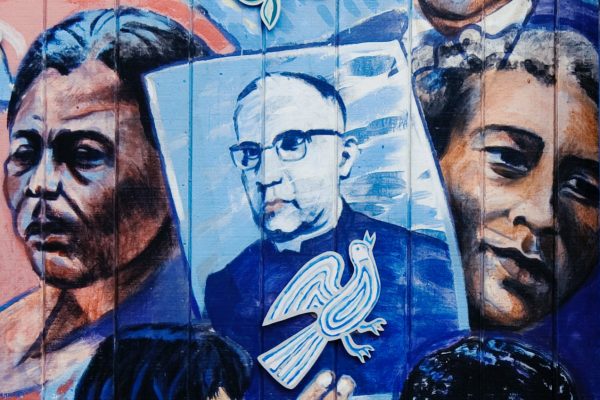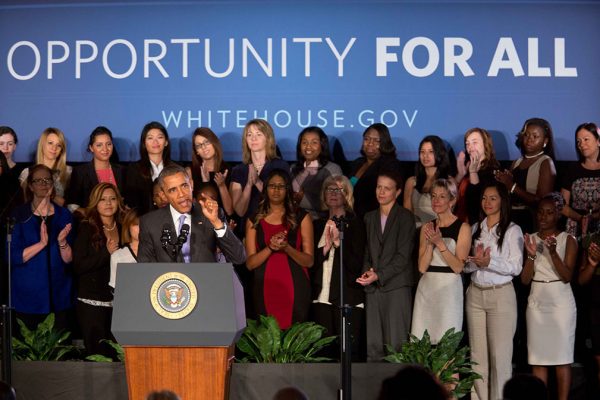Aziz Rana rightly contends that the fight for freedom is more than a simple narrative sparring match. Words are powerful, but delivering meaningful and lasting freedom requires building the institutions necessary to deliver the goods—among them labor unions, high-quality public schools, and the protection and expansion of truly democratic processes.
I agree that communication strategies alone are insufficient, but in my reading, Rana goes too far by brushing aside the crucial narrative work that must be done—work that is actually complementary to building the institutions, power, and meaningful freedom I know we both seek.
The very idea of freedom is contested terrain—it is, after all, the central political ideal of America, what historian Eric Foner calls our “master narrative”—and this battle is not a new one. What we mean by freedom has been fought over since the very founding of the United States, and the nation literally tore itself apart over this struggle. Did American freedom encompass the right to hold human beings in chattel slavery, thus denying any semblance of freedom to Black Americans? Or did American freedom entail the elimination of human bondage, along with the necessary civil, political, and economic rights to provide people meaningful opportunity to participate in democratic government and individual security? The Civil War, and later the civil rights movement, were momentous interventions in this struggle.
For the last half century this fight was pushed to the margins, sidelined by a new, largely bipartisan consensus over freedom. Capitalism seemed to many as though it would solve the centuries-long struggle; freedom now simply meant “free” markets, which in turn meant limited government—whether limited taxation, limited regulation, or limited oversight over local school boards. All this entailed some degree of political rights if you acted “right” and were part of the dominant group.
Today, with the utter failure of laissez-faire capitalism yet again—and the persistence of structural racism, despite false promises of achieving a postracial society—we have seen the rise of a more powerful and organized political left in the United States. At the same time, the far right has grown increasingly emboldened. In this conflict, the long struggle for freedom, and who has the right to be free, have center stage once more.
As this renewed conflict suggests, narratives are immensely powerful. It’s true that we can’t run some regressions to decompose the marginal impact of investing in narratives and how that translates to political power—at least not well. Nevertheless, investing our scarcest resource of all—our time—in narratives, ensuring voters know what a political party stands for, is invaluable.
When it comes to popular opinion, Republicans have clearly won the messaging battle: they are thought of as the party of freedom—the party that supports individual liberties and restraints on government. In reality, of course, much of the GOP does nothing of the sort, wielding big government when it suits them—from the law-and-order Republicans who funnel ungodly sums of money to law enforcement and the military, to the “family values” conservatives who expand government overreach by imposing abortion bans to wrestle away reproductive freedom from individuals. Still, the electoral power of the GOP derives in no small part from its rhetorical success: it has a simple message, and it sticks to it.
Now consider the Democratic Party. What, exactly, do Democrats stand for? In the popular imagination, their vision has become, at best, something like “not Trump,” or “not neoliberalism.” When President Biden announced earlier this year that he would seek re-election in 2024, he repeatedly invoked freedom, but it wasn’t exactly clear what he meant and how this rhetoric connected to his policy priorities. This is a familiar line of critique; commentators routinely point out that Democrats are always touting a “laundry list” of demands without a coherent story that ties them together.
This is where I believe the narrative struggle is well worth the energy. The lack of a coherent and easily communicated vision among Democrats, and the left more broadly, poses a serious problem for building movements and institutions. What, after all, are people fighting for? And what type of institutions will help deliver on those demands? These are crucial questions that can be addressed by properly articulating a north star: freedom.
There are plenty of popular narrative resources throughout U.S. history that we might draw on to make this case. Thomas Paine was unshakable in his pursuit of true democracy—coupled with equality of opportunity and result in the economic realm—as the foundation of a new, and truly free, nation. Abraham Lincoln and the Radical Republicans helped achieve the abolition of slavery. Franklin Roosevelt championed what he called the “Four Freedoms” and called for an Economic Bill of Rights. And the civil rights movement likewise demanded far more than political rights by centering economic demands, for instance in A. Philip Randolph and Bayard Rustin’s “Freedom Budget” and Martin Luther King, Jr.’s organization of the 1968 Poor People’s Campaign.
These struggles provide the U.S. left with a narrative and a powerful historical connection to the American story that squarely posits the fight for a richer, more fulfilling notion of freedom as central to the struggle for the country itself. Meaningful freedom will only be won through embracing an emancipatory vision of freedom that guarantees people political rights, civil rights, reproductive rights, and crucially, economic rights. Together these rights provide people with meaningful choices to be, and do, what they have reason to value.
It is true that narrative change is not a silver bullet; it alone cannot bridge the gulfs that have widened as the nation has become increasingly polarized. But stories, coupled with the critical work of reweaving the social fabric of our nation and delivering meaningful improvements in people’s daily lives through policy change, just might be. The terrain over the meaning of freedom remains contested, but the struggle—including the narrative struggle—is essential.








